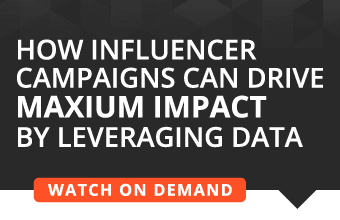What draws younger consumers like Gen Z and Millennials to influencers? New research from brand strategy and trend forecasting firm Cassandra takes a deep dive into the influencer space today to understand what gives influencers their influence, what brands need to do to be successful in the space, and the impact influencers have on purchasing behavior.
The firm’s new report, The Culture of Influence, found the subject of influencer authenticity to be a recurring theme with this combined group of 14-34-year-olds, revealing that when deciding to follow an influencer, 89 percent think it’s important that the influencer seems like a nice person, isn’t just trying to sell them something (86 percent) and makes their day better or improves their mood (86 percent). Another 85 percent believe it’s important that the influencers they decide to follow are trying to make the world a better place and are the types of people they’d want to hang out with.
“Young consumers want to follow influencers who are relatable, who don’t act like influencers and who fit seamlessly into the social bubble they’ve curated on their feeds,” said Kathy Sheehan, senior vice president of Cassandra, in a news release. “This is important knowledge for brands to understand when deciding to partner with an influencer as well as creating their brand’s online social media persona: be a friend, not a salesperson, and create content that fits within the context of the digital communities you want your brand to have influence over.”
For the report, Cassandra also asked young consumers about the influencer categories they follow, as well as the categories in which they’ve made purchases. They found that young consumers who follow influencers in a certain category are not surprisingly more likely to make purchases in that category—but there were also adjacent categories that greatly interested them, and that brands should be aware of. For example, 79 percent of young consumers who follow beauty influencers are likely to make purchases in that category and are also more likely to purchase books (63 percent) and interior design products (60 percent).
The report offers a breakout of young consumer-spending patterns for followers of four distinct types of influencers:
Beauty Influencers
Young consumers who follow beauty influencers are more likely to make purchases in: Beauty and Grooming (79 percent), Fashion and Style (67 percent), Health and Wellness (63 percent), Books and Literature (63 percent) and Interior Design (60 percent).
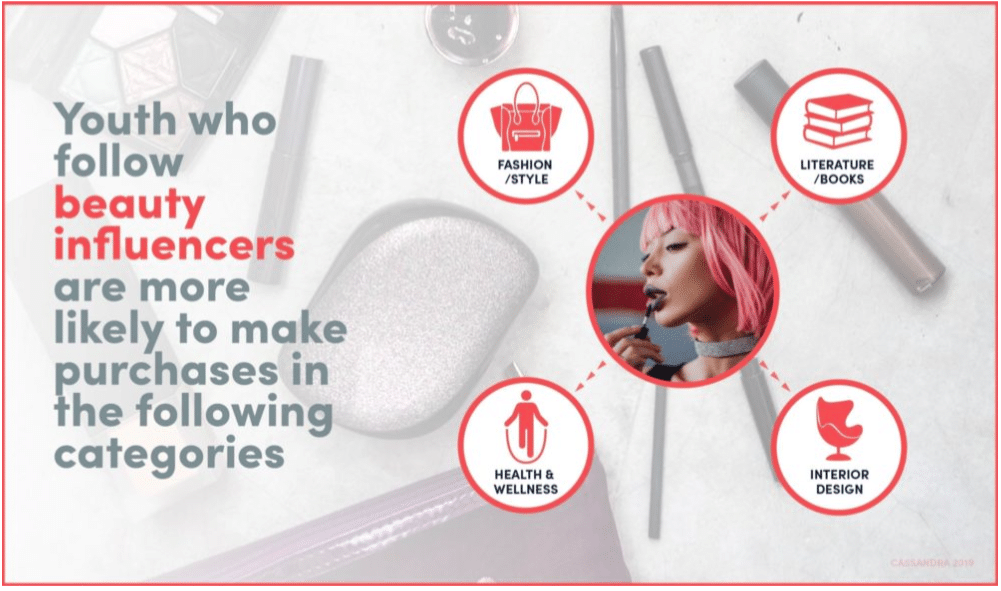
Interior Design Influencers
Young consumers who follow interior design influencers are more likely to make purchases in: Interior Design (60 percent), Travel (52 percent), Meditation and Mindfulness (51 percent), TV (47 percent) and Cooking (47 percent).
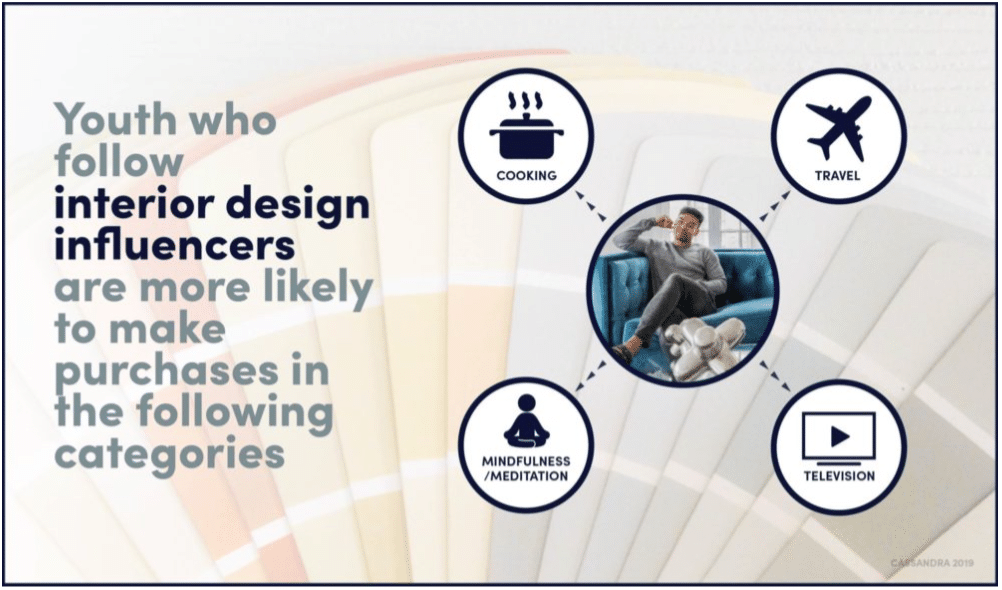
Fashion and Lifestyle Influencers
Young consumers who follow fashion and style influencers are more likely to make purchases in: Beauty and Grooming (80 percent), Fashion and Style (74 percent), Meditation and Mindfulness (71 percent), Books and Literature (68 percent), Interior Design (68 percent) and Health and Wellness (66 percent).
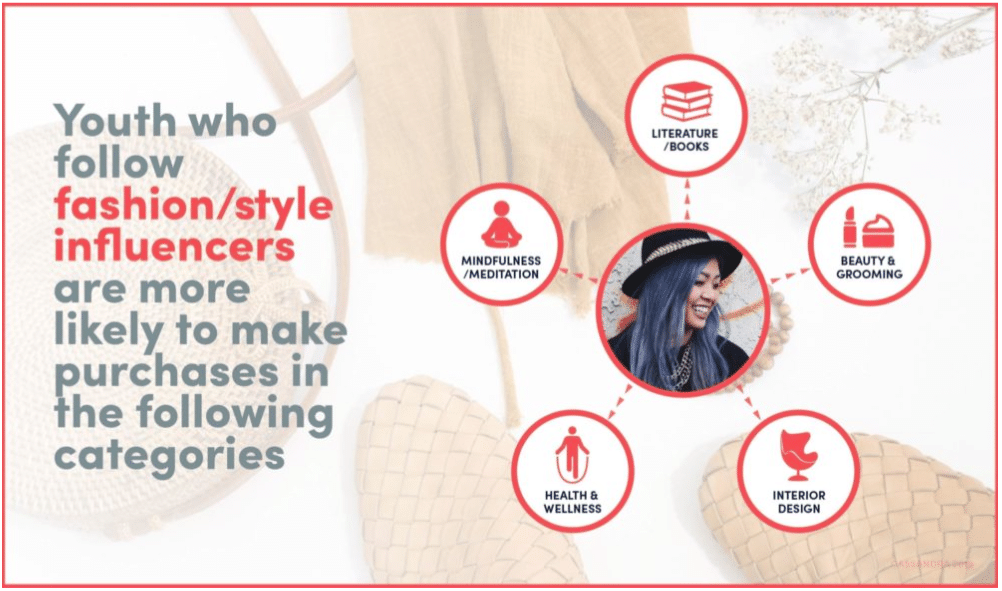
Video Game Influencers
Young consumers who follow video game influencers are more likely to make purchases in: Video Games (64 percent), Technology (58 percent) and Restaurants (49 percent).
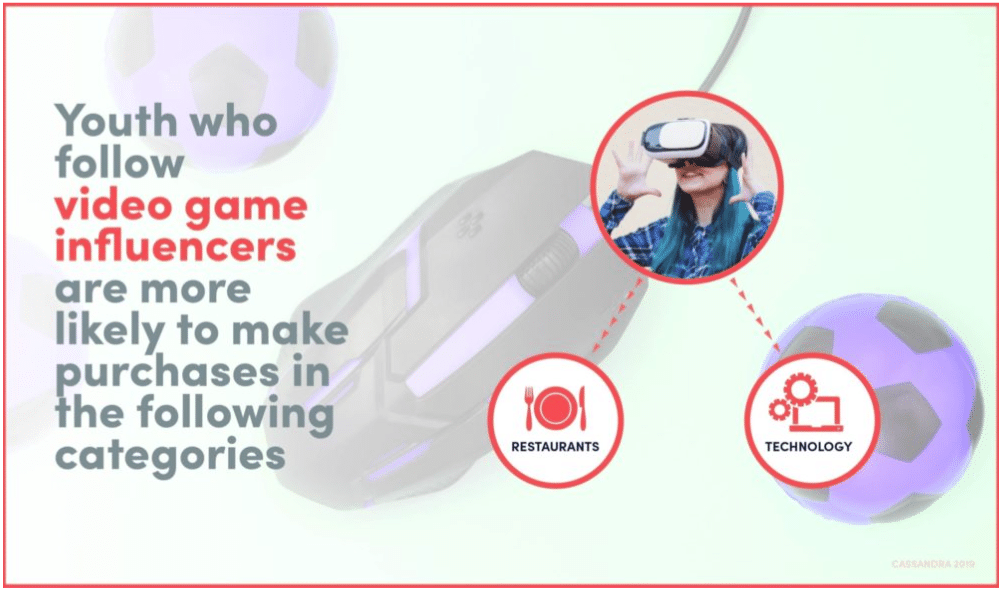
“Everyone is talking about influencers today, but understanding ROI remains a grey area in the space,” said Sheehan. “What I find interesting about our most recent findings is that we were able to correlate where the conversations are having an actual impact and driving purchase among Gen Zs and Millennials.”
Cassandra clients can download the report here.
The Culture of Influence Report was generated through a quantitative online survey fielded in the U.S. and UK among two respondent groups. We interviewed a nationally representative sample of 1,003 U.S. youth aged 14 to 34 based on age, gender, ethnicity, and region, and 505 UK youth in the same age range based on age, gender, and region. Additionally, we surveyed 521 Trendsetters between the ages of 14 and 34 across the U.S. and UK. The survey was fielded from October 14, 2019, through November 4, 2019.







